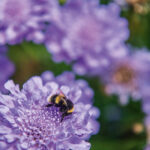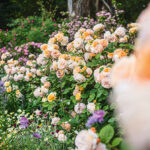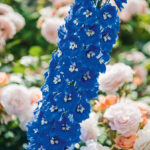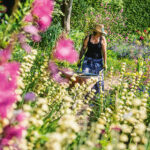The gardens of Greenhaugh: A trip to England inspired this glorious garden in Palmerston North
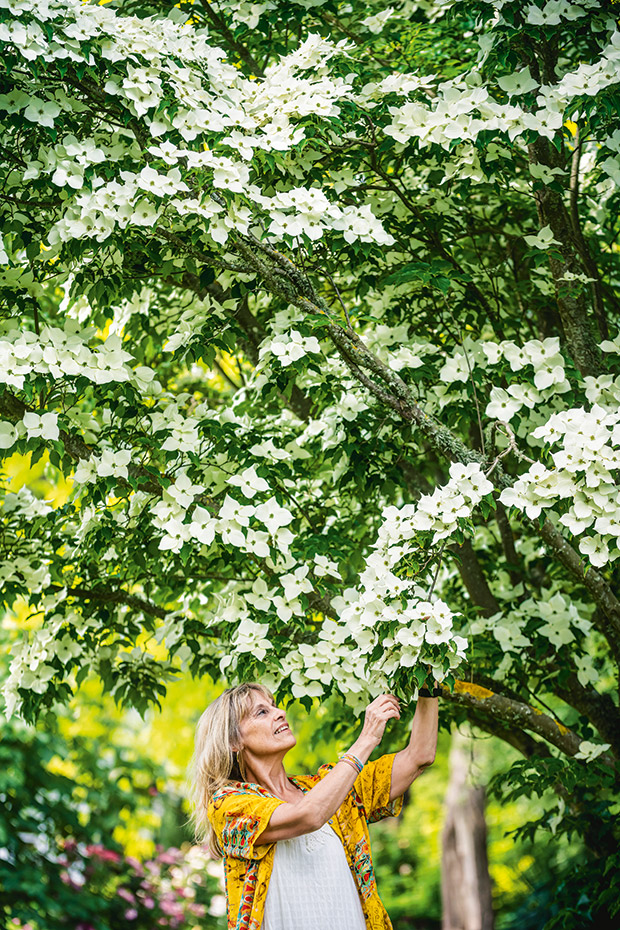
The Cornus kousa took many years to flower, but each year since it has provided a magnificent spectacle.
Nature gets away with quite a bit in this otherwise formal country garden.
Words: Kate Coughlan Photos: Mike Heydon
“There was a little green china frog in the middle of my grandmother’s garden,” says Lynne Atkins, recalling a long-ago garden in Ōtaki. “Pansies, snapdragons and violets circled the frog, and there were tiny dianthuses around the edge.”
Lynne’s recall of this garden is precise. She remembers her grandfather’s half-acre of flower gardens and the carnations, named ‘Ōtaki Pinks’, that he grew and sold at the local market. She also vividly recalls her maternal grandmother’s garden in Christchurch, with its birdbath proudly centre stage, the air heavily scented by blooms.
“I remember the exact layouts and all the plants in them even though I was only six or eight years old at the time.”
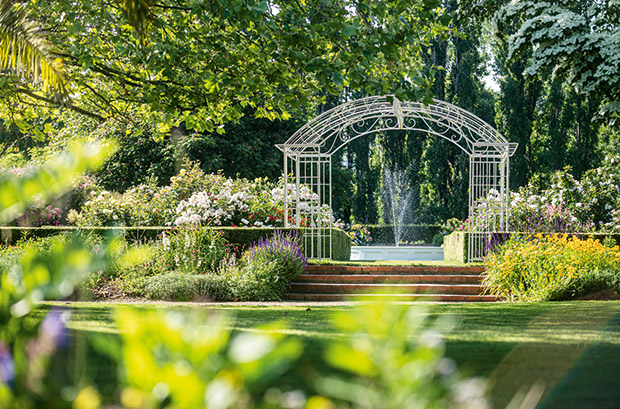
An arched entrance leading to rose beds surrounding a fountain is a popular spot for wedding photos in Greenhaugh Gardens, near Palmerston North. The six-star, two-hectare garden and nursery are open to the public daily except Sunday.
This little girl, reared in Levin, read The Secret Garden many times and went about with a head full of daffodils, dreaming of gardens just like the ones in her illustrated storybooks. “I always knew that one day I was going to have a beautiful garden.”
Life was initially a bit busy for the pursuit of gardening as marriage and motherhood demanded her full attention. She had, as an English and anthropology student, met Les Atkins – a law student – in 1969 on her first day at Victoria University.
“I was 17, and he was 20. We caught each other’s eye walking opposite directions in Cable Car Lane. And that was that. He hunted me down. We were married in January 1971 – the end of my second year at university. I finished my degrees [double majors] at the end of 1971 and worked in the Law Library in 1972. We had our first baby in 1973.”
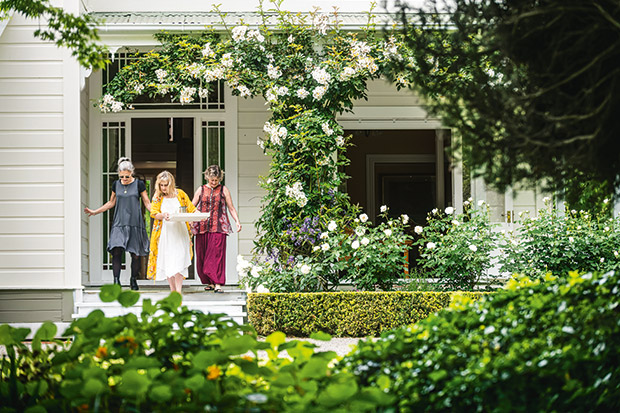
Lynne, her sister Katie and friend Jane head to the Giraffe House with afternoon tea to share with Greenhaugh staff. The rose ‘Wedding Day’ festoons the front verandah.
Les’ parents lived in a historic house in Ashhurst, a few kilometres outside of Palmerston North. When Les’ father became unwell and needed to be nearer the hospital, the younger Atkins swapped their then-townhouse in Palmerston North with that of Atkins, the Elders.
Thus Lynne found herself living in the large house called Greenhaugh, built in 1874 for Elizabeth Waugh, the young bride of early settler Kenneth McKenzie, and of which she (Lynne) is today the longest resident to call home. Forty-two years and counting.
She also found herself custodian of her mother-in-law’s garden. Seldom have our country’s most celebrated gardens grown from a daughter-in-law’s slavish attention to a departed mother-in-law’s grounds. However, Lynne initially enjoyed the garden as it was.
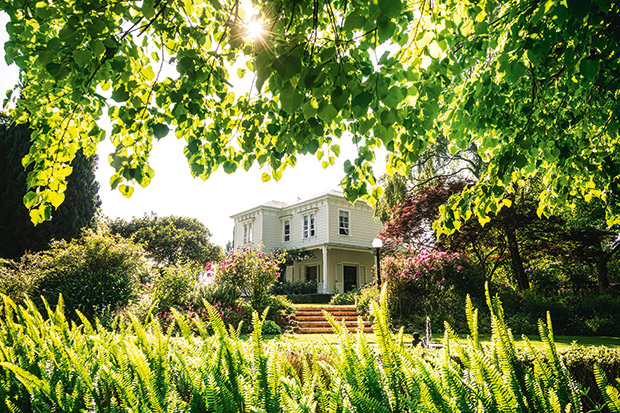
Greenhaugh’s original inhabitants named the house and garden after their home village in Northumberland. A second pond, with a fountain, was installed 30 years ago but the concrete steps leading down to it were recently remodeled with a softer brick and shell rock finish. Trees, from the original orchard, shelter the garden from westerly winds and the occasional frost. Lynne says she is lucky to have only a handful of frosts a year.
“I came here as a young mother with two small children and another on the way, and I was cautious about changing too much. It was a lovely garden of its time, with the usual things of the day such as conifers, gladiolus, spiky cactus dahlias and a lot of camellias.”
When Lynne and Les visited England, and she was able to visit the famous gardens at Sissinghurst and Hidcote, everything changed. “Of course I’d already read all the books I could on Sissinghurst and Hidcote, so I walked in there knowing precisely what it was going to be. But I was still completely overwhelmed, so much so that at Hidcote I stood and cried. It was early summer and so astoundingly beautiful.”
Lynne’s keen memory stored a visual record of every vista, every plant and every beautiful swathe of colour and texture and her excitement grew. She and Les arrived home enthused about redesigning Greenhaugh’s garden and dreaming of how it might look.
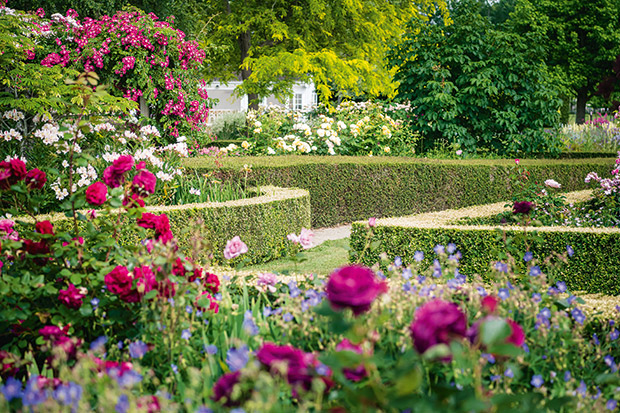
Bore water allows Lynne to irrigate some areas during late summer droughts, though the garden is well mulched for moisture retention and weed control. The roses in these beds — mostly Austins and Heritage — flower through a sea of perennials and bulbs.
By this time, Les was a busy and successful criminal barrister and on the road for most of the year, involved in murder trials through the country. Despite these absences and distractions, his involvement in the garden and its development was significant.
“Gardening seriously took hold of me when we were in England, and as soon as I got home, almost in one go I grew the garden from half an acre to the five acres it is now. I took the fences down, removed an ancient orchard and took over the pony paddock,” says Lynne.
The couple had agreed that the garden was not big enough to balance the house, which is not only of an imposing height but built on rising ground. But when it came to the appropriate size for this new garden, Les initially wondered if Lynne had gone over the top. “It’s huge,” he said. “Don’t you think you might have made a mistake?”
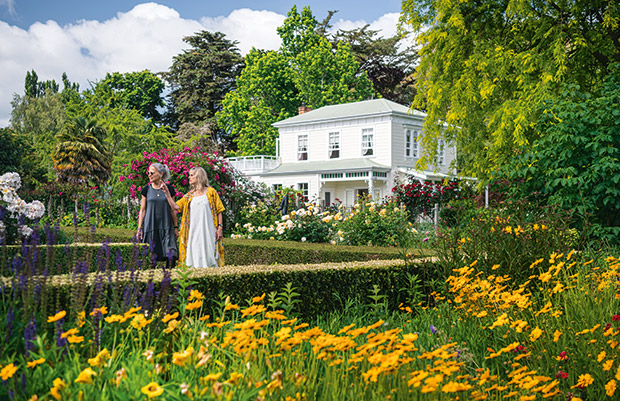
The golden coreopsis is a rewarding long-flowering border plant that Lynne likes to see flowing in cheerful swathes beyond the formality of the buxus hedging. This way, her garden is a journey for visitors and they can be led by their senses.
Lynne was adamant that not only had she the correct proportions, but he’d eventually see she was right. She enlisted his help in planning it out. “We sat down together and drew up what we wanted on a huge piece of paper. His ideas were more formal than mine, but the combination has made it work. If it’d been all my thoughts, it’d be meandering paths through sheaves of wildflowers, looking too out of control and wild. And if it had been his formality all the way, it would have been too tight.”
And so it was for nearly four decades, life revolving around their three children – Rebecca, John and George – and their garden, with Les designing the formal lines and Lynne planning and planting.
Tragically, the partnership ended four years ago when Les, aged 67, died after an illness. Lynne believes the stress of his career played a part in his untimely death. His was an extraordinary life as a criminal barrister, QC, law commissioner and district court judge, and included a record for 40 back-to-back murder-trial acquittals as a defence lawyer.
- A light touch with spray keeps the garden full of bees, butterflies, frogs and birds.
- The rose, ‘Pat Austin’, is repeated along chains at the back of the terrace below the Giraffe House.
- Initially, Lynne wanted just about every plant on which she could get her hands. “Until I got over the collecting obsession and began to plant with a more aesthetic eye, I lost many plants because I had to try everything. It was my growing phase.”
- Basil, the wire-haired fox terrier, is no respecter of formal garden boundaries such as hedges.
- Gardener Sara Tastard is almost lost among the Sisyrinchium striatum.
When he was made a Companion of the Queen’s Service Order in January 2016, he said he’d seen things people would prefer not to look at. He also noted that he had been fortunate to have his family when dealing with what were often gruesome homicide cases. “I have a family that is very gentle in their approach to things. I think that probably keeps you sane, to a degree.”
Lynne says their garden was his haven. “He absolutely loved it and, funnily enough, once things started to grow, he said, ‘Oh, it is quite small, isn’t it?’ So we added a bit out the back.”
Since his death, she has put her heart and soul into the garden and believes her grief is what earned it a coveted six-star rating from the New Zealand Gardens Trust. Gardening was how she dealt with her loss.
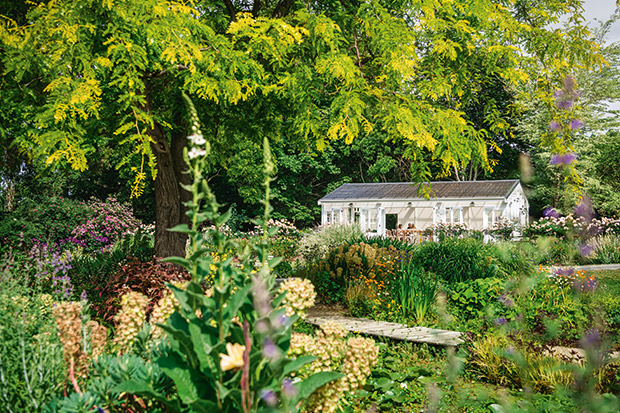
Wedding guests are served drinks in the Giraffe House while photos are taken around the garden. Greenhough is not available for receptions, but Lynne is happy for wedding parties to have time to capture beautiful images of their special day.
A project Lynne and Les had often discussed, but never got around to, was the building of a structure in the north-western corner of the garden to be used by wedding parties and garden visitors. She set about designing and building the Giraffe House in the years immediately after his death. Nearby, a family of close-to-life-size giraffe are a memorial for Les and a reminder of a wonderful time spent together in Africa.
Lynne doesn’t take all the credit for the garden, far from it. In addition to Les’ designing eye, is a pair of loyal gardeners who have been with Lynne for 30 years. “My astounding gardeners,” says Lynne. “Janet and Colin have built the garden with me. Colin [Mahy] has built all the structures and Janet [Wilson] manages the garden.”
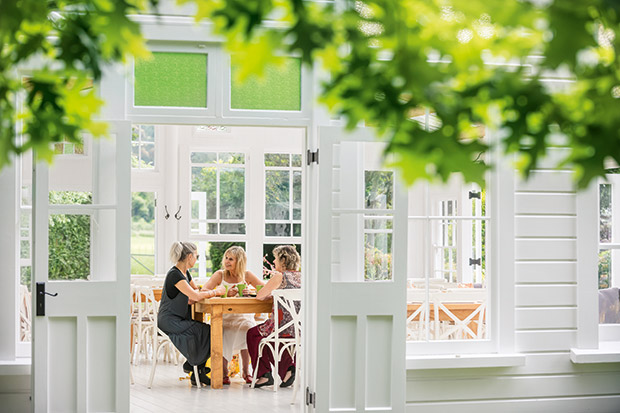
The Giraffe House is used by the family, and by garden visitors wanting a quiet cup of tea, a picnic or celebration.
Given the reputation of Lynne’s baking and the legendary morning teas enjoyed by staff around the kitchen table, it is little wonder that staff numbers sometimes swell to nine. Greenhaugh includes a large nursery selling, among other things, rare plants that Lynne and Janet have grown from imported seeds
“The nursery is a hobby. I don’t make money out of the garden and nursery, but the plant sales and garden visits go some way towards paying for the gardeners.”
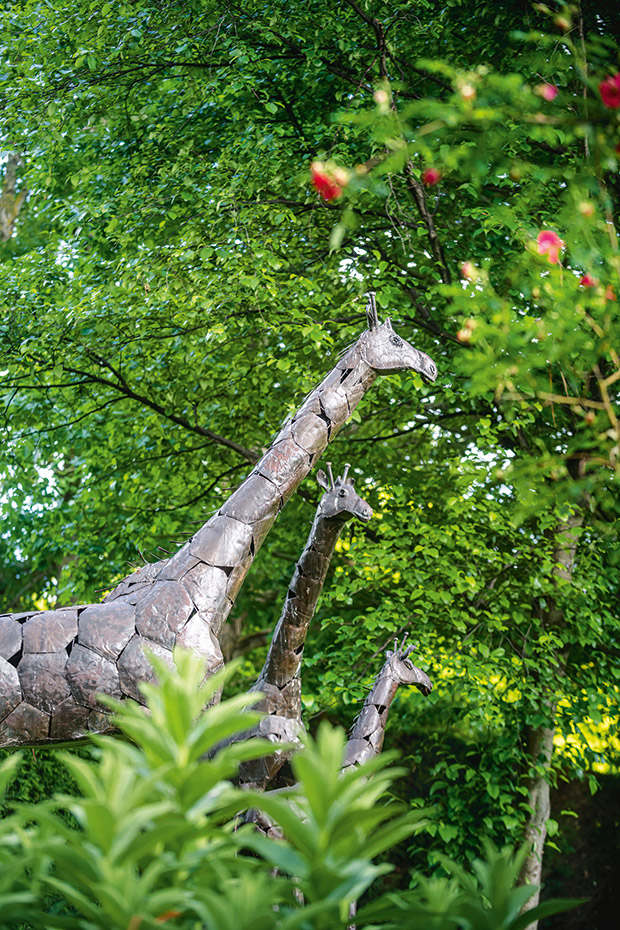
The near-life-sized giraffe fashioned from oil drums and imported from Zimbabwe is both a memorial to her late husband Les and a reminder of wonderful times spent with him in Africa.
As well as her somewhat-photographic memory, Lynne can see things before they are there. She can visualize a planting before it is completed. But, then, along comes her other secret garden helper, mother nature.
“The garden gets better and better, partly helped by plants self-seeding in places I’d never have put them. We have to keep the proportions right, but nature has a way of doing magnificent things, choosing colour combinations I’m way too afraid to try. It will create big patches of plants that I may never have planted on that scale.

Jacob, the donkey, is always ready for a chat, a chew and a pat.
“And, also, you will find plants in an area that you never put them. You think, ‘How on earth did they get there?’ But they look wonderful exactly where they’ve put themselves. And they usually do far better in the situation they’ve chosen rather than the place I’d have chosen for them.”
Lynne adores sharing the garden with her children, who all love it too despite two being in Hawke’s Bay and one in north Auckland. She is a proud grandmother to eight – five of whom she gained in 10 months thanks to the arrival of two sets of twins (coincidentally due one day apart but one set arrived six weeks premature). Her grandchildren range from four to 14 and are regular visitors at Greenhaugh.
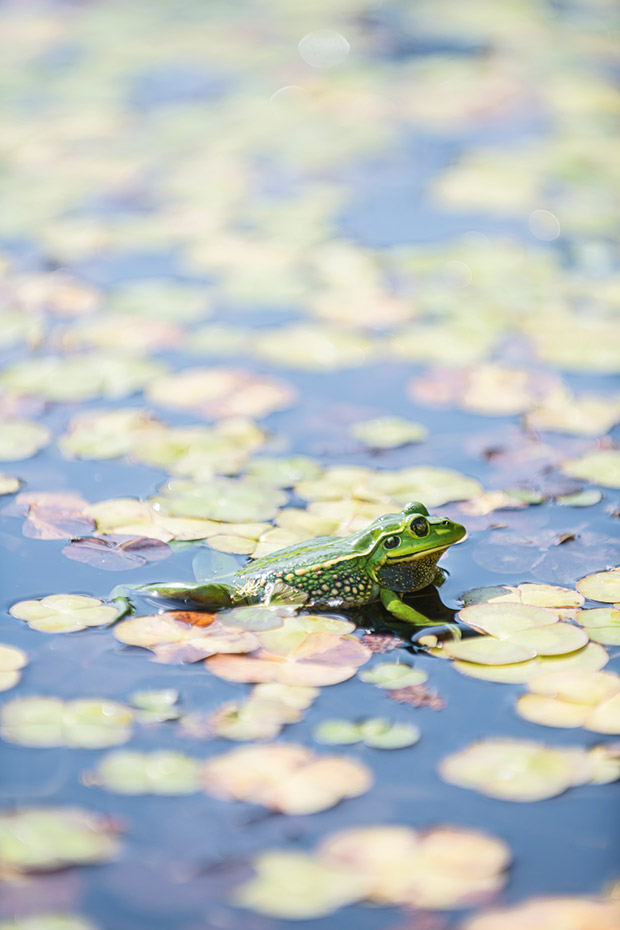
Lynne is especially delighted to see frogs in her ponds. She regards them as harbingers of a healthy environment and loves their early morning and evening sing-songs.
Lynne’s long-term plan is relaxed. “We are creating this together, and I know things change, and I don’t expect this garden to be here forever. I don’t know what will happen to it. In the meantime, I love it, and we [the family and gardeners] love sharing it.”
PROPAGATION IN THE GREENHOUGH NURSERY
“Janet [Wilson, who manages the garden at Greenhough] and I love propagation. We’ve been importing seeds for 27 years; a lot of wild-collected seed, including rare fritillaries, a tulip species, alliums and crocuses.
“It is exciting to watch seeds germinate and get to know their habits. How fascinating it is that a family of plants know to sprout at the same time. Seed from two different continents will germinate on the same day, hard-wired to develop by the same conditions.
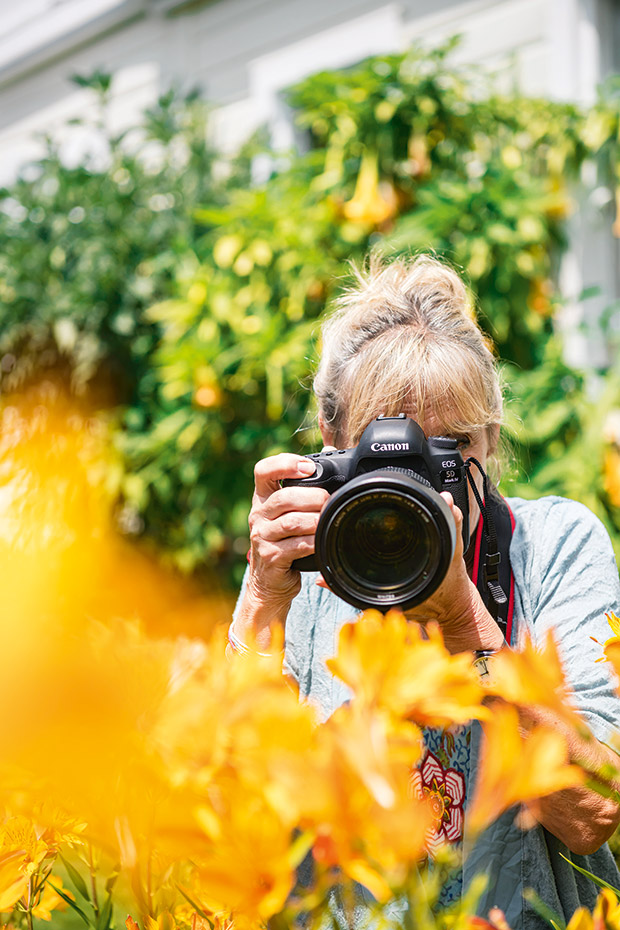
“I began by photographing my plants to sell on Trade Me; now I have a large bank of customers. Social media has been important in growing this garden in recent years, putting me in contact with people nationally and internationally.
“We posted a photo of a crocus [photographed left by keen photographer Lynne] we’d grown from imported seed wild-collected on a Greek island by the late Marcus Harvey of Hillview Plants in Australia, and I was delighted to receive a comment from Janis Ruksans, the world authority on crocus, adding more information to my story. He knew precisely from where that seed had originated.”
A FINE BALANCE
If Lynne Atkins were to have her way, everyone would spend 20 minutes a day on their heads with their legs in the air. A formally trained Iyengar yoga teacher, Lynne practises daily and has done so since she attended her first class two decades ago.
“Within 15 minutes in that very first class, I knew I’d be doing it for the rest of my life. It gives me a huge amount of energy and an ability to deal with trials that life throws at me calmly. I am a happy, positive person.”
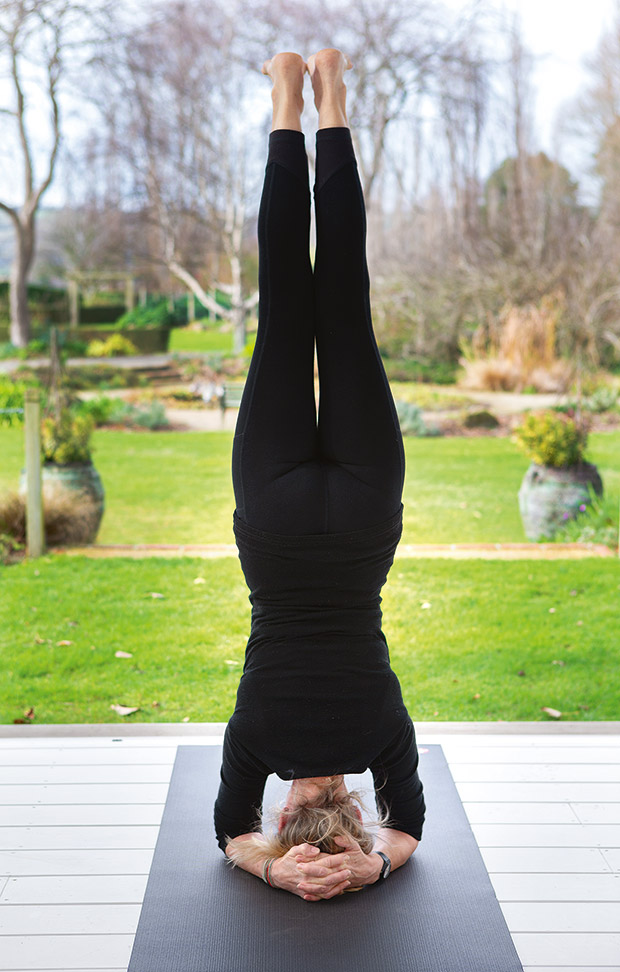
Training to be a yoga teacher, is a long slog and hard work, particularly the Iyengar practice, which can be quite strenuous. Yet, teaching provides a life balance that, along with gardening, she believes is ideal.
“It is hard to put into one paragraph the explanation of yoga. It is not gymnastics. It works at a deeper level on body and soul, and the mind through the body. The asana practice is a meditation, and I also find that working in my garden is a meditation. It is involving, and it narrows the focus, which is what meditation is. It stills the
other thoughts.
“I have a handstand wall in the Giraffe House where I do spend quite an amount of time each day upside down. There’s huge value in it, with blood flow to the head and the resting of the organs. You could write a book on the benefits of being upside down.”
MORE HERE
At home with Tāme Iti: Explore the vegetable gardens, sunflowers and art studio of a Tūhoe activist
Love this story? Subscribe now!
 This article first appeared in NZ Life & Leisure Magazine.
This article first appeared in NZ Life & Leisure Magazine.
